Fruits are vital part of the human diet and essential nutrition, as they are rich sources of vitamin C, water, fibre and much more. With the most diverse climate across the country ranging from tropical belts in Southern India to the cold Himalayan belts, India has possesses the distinction of being the world’s second largest fruits-producer.
Today, the Indian supermarkets have a wide range of fruits not only from the country but also from across the world. Of course, the fragrance of fruits and their colours surely attracts the attention of any passer-by. However, according to research, the local produce, especially organic ones have far more nutritional benefits and they are thus, mostly sought-after. Such exotic fruits are grown locally Indian and are very popular. They are very much seasonal and often collected from wild and are usually eaten by locals; however many of them have made their ways into markets, as well.
Here are some of exotic and rare Indian fruits with amazing nutrition bonanzas.
Jungli Jalebi/ Kodukkapuli (Camachile):

It looks like Indian sweet Jalebi. The spiraling green-pink pods of Camachile usually come with about 6-10 shining black seeds enveloped in a thick edible pulp. Add to more, the pulp can be either eaten raw or sometimes made into a drink just like lemonade. This fruit is native to Central Asia, Florida, Guam, Caribbean, America and Mexico. In India, it is mostly found in Kerala, West Bengal, Andhra Pradesh, Maharashtra, and Tamil Nadu.
Its bark and pulp are often used to treat toothache, gum ailments and hemorrhages in general. The bark extract is also used against tuberculosis, chronic diarrhoea and dysentery. Moreover, its ground seed helps in treating ulcers.
Carambola (Star Fruit):
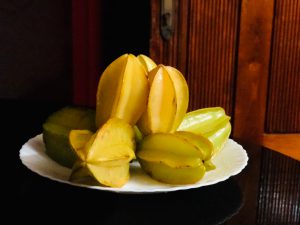
Perfect for pickle, this fruit with waxy skin is sour in taste but its slightly brown ribs are quite sweet. This fruit is usually grown in southern part of India. Star Fruit is rich in vitamin C, potassium and antioxidants. Surprisingly, this fruit is low in acid, sodium and sugar.
Buddha’s Hand (Fingered Citron):
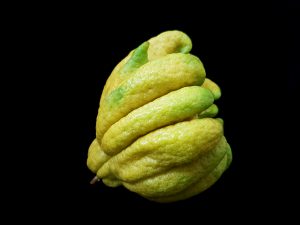
This unique fruit resembles lumpy lemon with extended, yellow tentacles like gnarled human fingers. The fruit is very aromatic and has a mild and somewhat spicy flavour. Some scholars are of the view that India’s migrating Buddhist monks carried along Fingered Citron with them to China in 400 AD. Grown in Northeastern parts of India, this fruit contains pulp which can be consumed as a flavouring in desserts and also can be used to make sweets. Its dried peel of immature fruit is also considered as a tonic in traditional medicine.
Langsah/ Lotka (Langsat):

This orb-shaped, translucent fruit is quite sour when unripe, but very much sweet when ripe with a taste like a bittersweet grapefruit. Grown only in a handful of regions in South and East India (especially in the Nilgiri hills), langsat is nutritionally rich having many vital elements such as minerals, vitamins, dietary fibre, carbohydrates and proteins. It is also rich in thiamine, riboflavin and vitamin A, which are quite crucial for many body functions.
Mangustaan (Mangosteen):
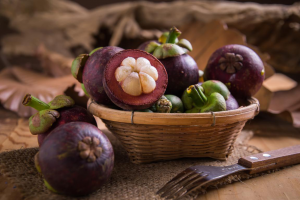
This fruit comes with sweet fleshy and snow-white interior with leathery purple-maroon shell. It has earthy and mellow flavour just like mango. This fruit is a national fruit of Thailand which is usually seen growing especially in Southern parts of India. It is rich in antioxidants and dietary fibre with less amount of calories and no saturated fats. Moreover, it is also rich in minerals such as manganese, copper and magnesium along with vitamin C.
Japani Phal (Persimmon):
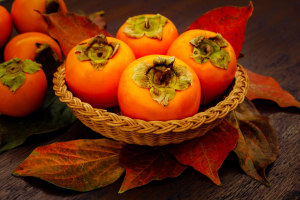
Japani Phal is the local Himachali name for this luscious persimmon. The ripened fruit is a great gastronomic delight. Persimmon is a native of China and was brought by European settlers in India in the early 20th century. This fruit is usually grown in Nilgiri Hills, Uttarakhand, Jammu & Kashmir and Himachal Pradesh. Rich in vitamin C and A, this fruit is also loaded with manganese, fibre, copper and B-complex.
Ambarella (Indian Hog Plum):
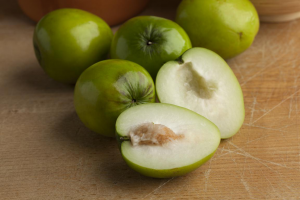
Indian Hog Plum is also called wild mango which has sweetness quotient of pineapple. This fruit can be consumed as pickle or juice or also as a flavouring substance in mocktails. Grown in Goa, Kerala, Tamil Nadu and Karnataka, this fruit is loaded with natural antioxidant and vitamin A.
Karonda (Carandas Cherry):
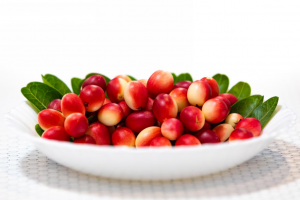
Carandas is a type of wild berry enriched with nutrition. Its flesh tastes like cranberries when fully ripe. This fruit is generally used in sweet pickles and jams. Grown in West Bengal, Nilgiri Hills and Siwalik Hills of Bihar, Carandas Cherry is loaded with astringen which is useful for treating skin conditions. It is also used to relieve from stomach pain and bad digestion.